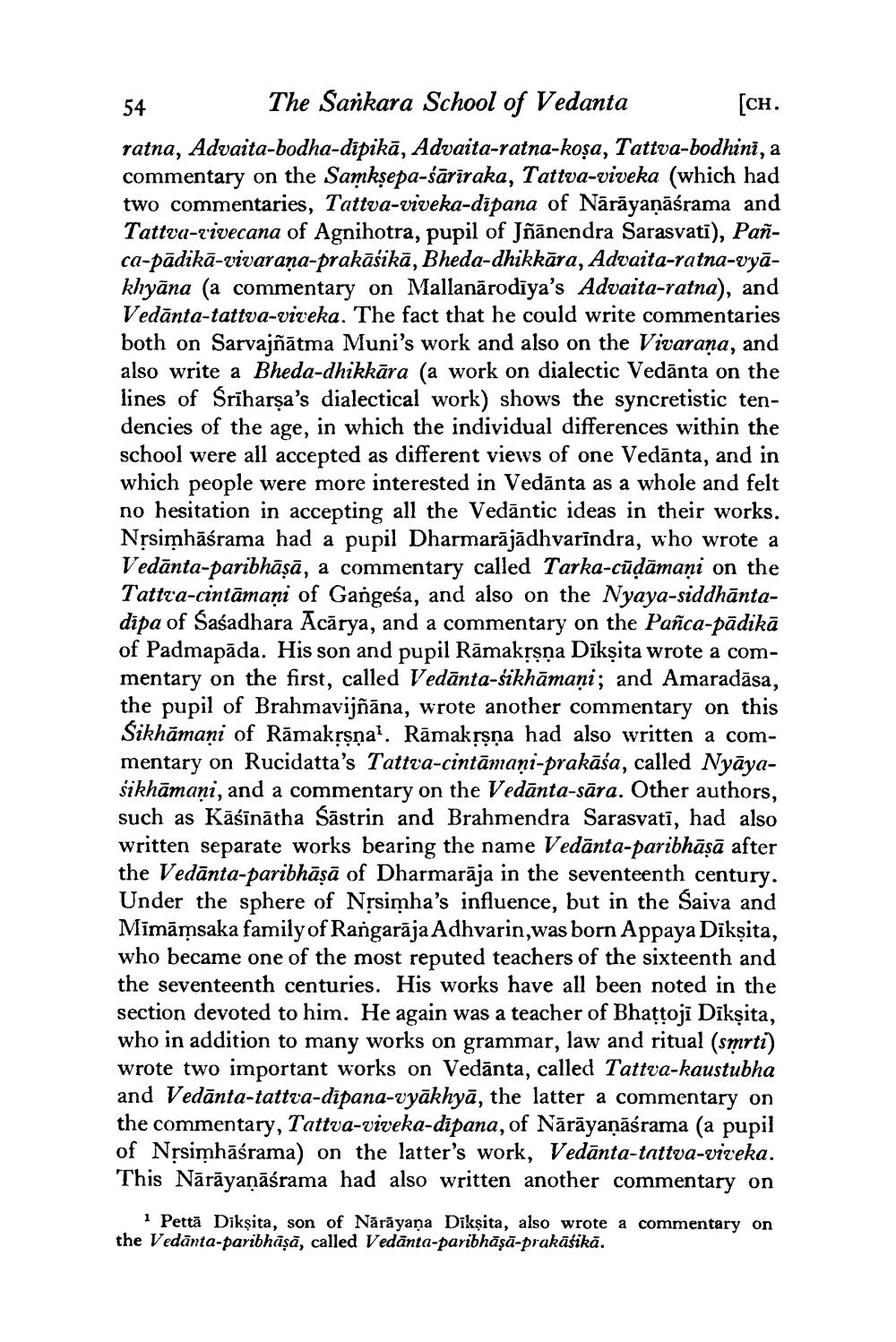________________
54
The Sankara School of Vedanta
[CH.
ratna, Advaita-bodha-dīpikā, Advaita-ratna-koșa, Tattva-bodhini, a commentary on the Samkṣepa-sariraka, Tattva-viveka (which had two commentaries, Tattva-viveka-dipana of Nārāyaṇāśrama and Tattva-vivecana of Agnihotra, pupil of Jñanendra Sarasvati), Pañca-pādikā-vivaraṇa-prakāśikā, Bheda-dhikkāra, Advaita-ratna-vyākhyāna (a commentary on Mallanärodīya's Advaita-ratna), and Vedanta-tattva-viveka. The fact that he could write commentaries both on Sarvajñātma Muni's work and also on the Vivaraṇa, and also write a Bheda-dhikkāra (a work on dialectic Vedanta on the lines of Sriharṣa's dialectical work) shows the syncretistic tendencies of the age, in which the individual differences within the school were all accepted as different views of one Vedanta, and in which people were more interested in Vedanta as a whole and felt no hesitation in accepting all the Vedantic ideas in their works. Nrsimhasrama had a pupil Dharmarājādhvarindra, who wrote a Vedānta-paribhāṣā, a commentary called Tarka-cūḍāmaṇi on the Tattva-cintamani of Gangesa, and also on the Nyaya-siddhāntadipa of Sasadhara Acarya, and a commentary on the Pañca-pādikā of Padmapada. His son and pupil Rāmakṛṣṇa Dīkṣita wrote a commentary on the first, called Vedānta-sikhāmaṇi; and Amaradāsa, the pupil of Brahmavijñāna, wrote another commentary on this Sikhāmaṇi of Rāmakṛṣṇa1. Rāmakṛṣṇa had also written a commentary on Rucidatta's Tattva-cintāmaṇi-prakāśa, called Nyāyasikhāmaṇi, and a commentary on the Vedanta-sāra. Other authors, such as Kāśīnātha Sastrin and Brahmendra Sarasvati, had also written separate works bearing the name Vedanta-paribhāṣā after the Vedanta-paribhāṣā of Dharmaraja in the seventeenth century. Under the sphere of Nrsimha's influence, but in the Saiva and Mīmāmsaka family of Rangaraja Adhvarin,was born Appaya Dikṣita, who became one of the most reputed teachers of the sixteenth and the seventeenth centuries. His works have all been noted in the section devoted to him. He again was a teacher of Bhaṭṭoji Dikṣita, who in addition to many works on grammar, law and ritual (smrti) wrote two important works on Vedanta, called Tattva-kaustubha and Vedānta-tattva-dipana-vyākhyā, the latter a commentary on the commentary, Tattva-viveka-dipana, of Nārāyaṇāśrama (a pupil of Nrsimhāśrama) on the latter's work, Vedanta-tattva-viveka. This Nārāyaṇāśrama had also written another commentary on
1 Petta Dikṣita, son of Nārāyaṇa Dikṣita, also wrote a commentary on the Vedanta-paribhașă, called Vedanta-paribhāṣā-prakāśikā.




